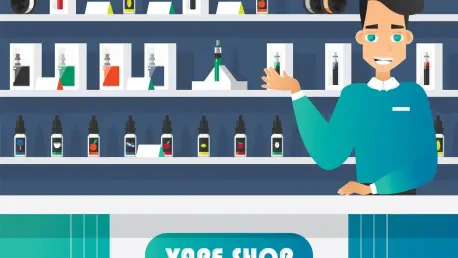The world is witnessing an unprecedented surge in youth smoking rates, raising red flags across health sectors and prompting urgent calls for reforms in regulatory practices. Recent statistics reveal an increase in smoking prevalence among 11-17-year-olds, signaling an urgent need to re-evaluate the current frameworks meant to deter underage smoking. This analysis examines the critical factors at play and proposes new approaches to effectively address and resolve the growing crisis.
Rising Trends in Youth Smoking and Market Dynamics
In recent years, the tobacco and vaping markets have undergone significant transformations driven by consumer behavior shifts and evolving public policies. Despite prior progress achieved through anti-smoking campaigns and the introduction of vaping as an alternative to traditional cigarettes, the youth demographic shows alarming trends. Retailers’ lax enforcement of age restrictions and persistent misconceptions about the risks associated with vaping have contributed to this resurgence. Addressing these trends requires a focused analysis of the factors influencing these market patterns.
Retailers hold a fundamental responsibility in regulating youth access to tobacco products. Data has highlighted that poor enforcement of existing age restrictions significantly contributes to increased smoking rates among young individuals. The push for more stringent penalties and a fortified licensing framework is viewed as a necessary step toward decreasing unauthorized sales to minors. Balancing retailer accountability with consumer access remains a delicate operation, necessitating policies that support adult users’ efforts to quit smoking while firmly restricting minors’ access.
Vaping Misconceptions: Challenges and Opportunities
The growing prevalence of vaping among youth underscores a critical issue: widespread misconceptions surrounding its health implications. A substantial percentage of adults and youth erroneously believe that vaping poses similar or greater risks compared to smoking traditional cigarettes. This misinformation hampers efforts to promote vaping as a less harmful alternative and can skew public perceptions negatively. A robust national public health campaign focused on educating the public about the distinct risk profiles associated with smoking and vaping is essential for correcting these misperceptions. By aligning understanding with scientific evidence, stakeholders can better influence informed consumer choices and support harm reduction goals.
Looking Forward: Predictions and Strategic Direction
The landscape of nicotine consumption continues to evolve as technological innovations and new regulatory measures emerge, offering promises of advancing control while enhancing public health. Proactive strategies, such as improved age verification technologies, could significantly decrease unauthorized access. Policymakers and industry stakeholders must collaborate to adopt innovative solutions that prioritize youth protection without hindering access for adults seeking alternatives. By staying informed on market trends and adapting accordingly, there is potential for reshaping the future trajectory of youth smoking.
Implications and Strategic Recommendations for Stakeholders
The findings underscore a pressing need for a comprehensive, multi-pronged approach to stem the tide of rising youth smoking rates. Actions focused on strengthening retailer compliance, launching targeted educational initiatives, and meticulously shaping public perceptions are essential. Collaborative efforts among retailers, policymakers, and public health authorities could drive significant progress in curbing youth access to nicotine products. Industry stakeholders are thus encouraged to work together toward building robust strategies that effectively mitigate health risks and promote a healthier generation.
In conclusion, the rise in youth smoking rates reflects a critical juncture necessitating prompt and cohesive action from all stakeholders involved. By refining regulatory frameworks and advancing public education efforts, the potential to reverse these trends and safeguard the well-being of future generations becomes more attainable.








